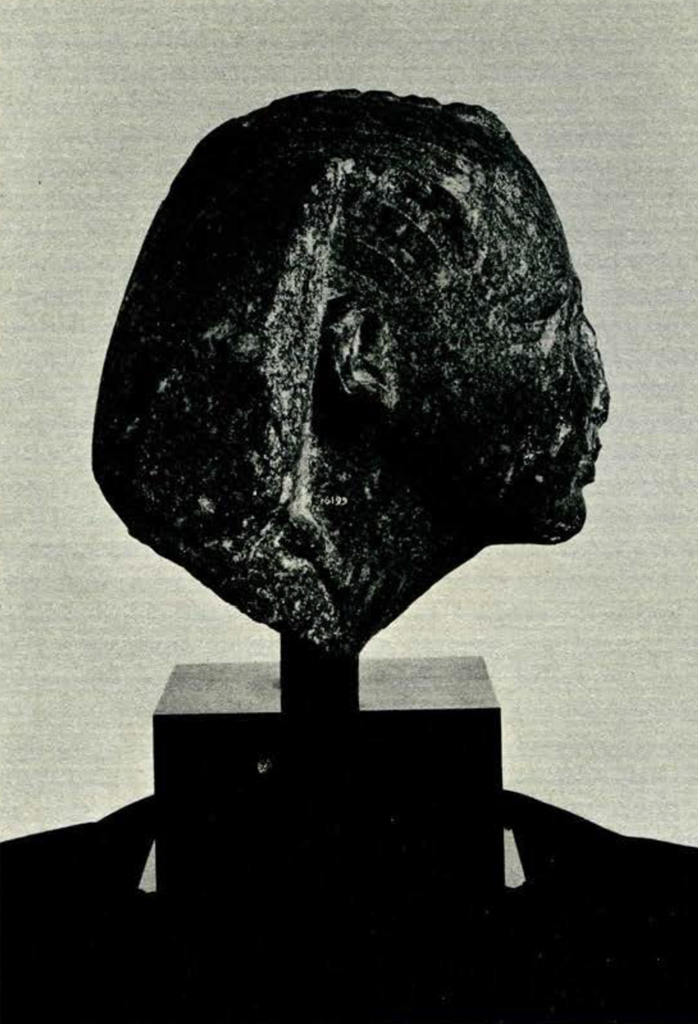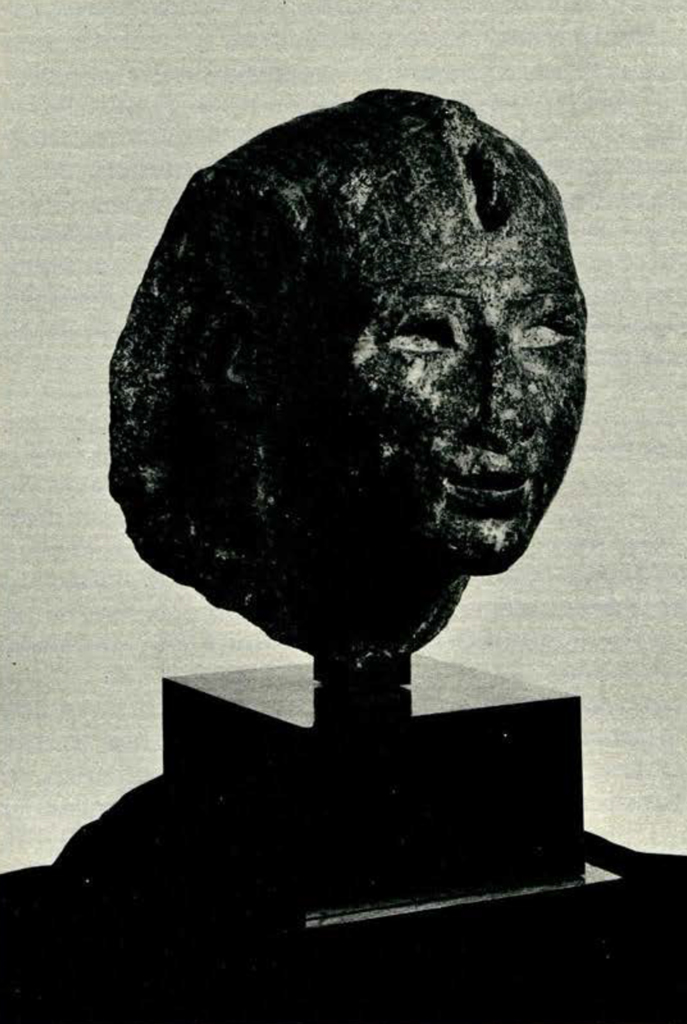
Museum Object Number: E16199
Image Number: 31184
THE fine head of an Egyptian ruler shown on Plates X and XI was purchased by the Museum from an antiquity dealer in 1925, but has not heretofore been published in the Bulletin. It bears the catalogue number E. 16199. Of its previous history nothing is known, but its authenticity cannot reasonably be doubted. It is of mottled dark grey and white granite, and measures over-all thirty-three and a half centimeters in height; the face, from just under the chin to the edge of the head-cloth on the forehead, is seventeen centimeters high. It is thus of life size. The side shown in the photographs is slightly better preserved than the other.
The raised and depressed bands representing the pleating of the head-cloth are of equal width. The fore-part of the uraeus (or sacred cobra) on the brow is lost, and was inlaid in a deep slot cut for the purpose; it was probably of bronze gilt. The tail of the uraeus, carved in the stone, passes back, with nine curves, along the whole of the top of the head. The empty eye-sockets originally contained inlaid eyes; from their outer corners run the ‘cosmetic stripes’ of eye-paint running back toward the ears. The chin is chipped, but never had a beard. There is no trace of color.

Museum Object Number: E16199
Image Number: 31183
A very striking feature of the piece is the remaining front part of the neck, set at an angle which shows that the head must have been stretched far forward from the body. The only known type of royal statue (apart from those of Akhenaten and his family) bearing a head thus placed is that in which a king is kneeling on one leg, the other being thrust far out behind, while between his hands, which rest on the ground as far as possible before him, he holds an offering for a god. The statues of kings in this attitude (a compromise between kneeling and prostration), which are all in the Cairo Museum, are, however, very small, and the head here described seems to be the only evidence of the existence of life-sized examples of the type.
The attribution of the head to a particular royalty is difficult, owing largely to the loss of the nose. The other features suggest either Tuthmosis III (about 1500-1450 B. C.), the great conqueror of the Eighteenth Dynasty, or his relative and consort, Queen Hatshepsut (about 1500-1480 B. C.).
B. G.

